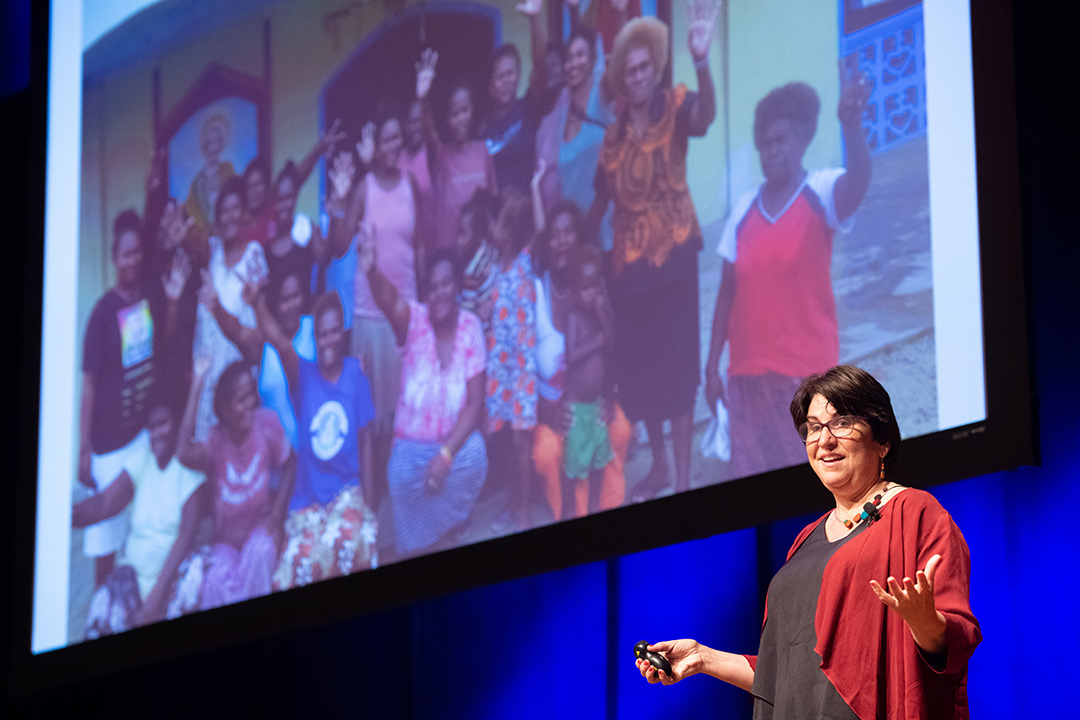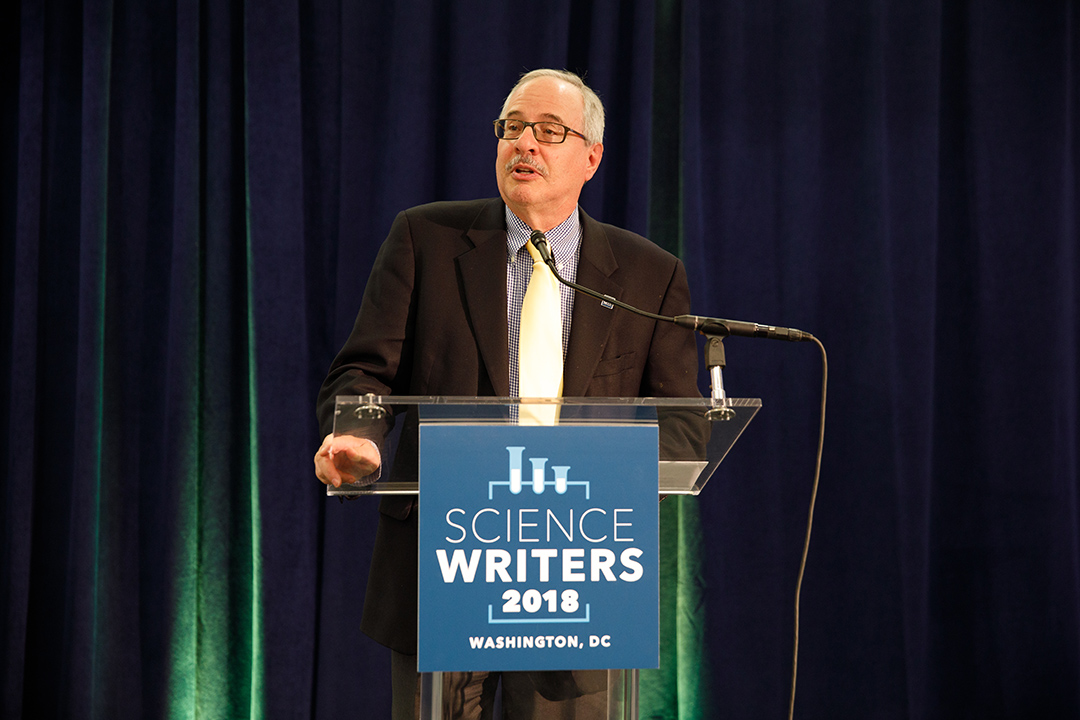By B.L. Wilson and Ruth Steinhardt
George Washington University President Thomas LeBlanc welcomed journalists and writers Friday evening to ScienceWriters 2018, an annual gathering of science communicators, reminding those in attendance of their key roles in explaining the work of researchers at GW and other institutions to a broad audience.
GW hosted the conference this year. At an opening reception at Science and Engineering Hall, Dr. LeBlanc called attention to SEH as a microcosm of GW’s approach to science and its applications. The building’s design situates scientists with shared interests in “research neighborhoods” to encourage cross-disciplinary communication, and its location in Washington, D.C., enables partnerships with entities such as the Smithsonian and NASA’s Goddard Space Center.
“But all the work happening in this building, at this university and at universities around the country would remain behind closed doors were it not for you,” Dr. LeBlanc told conference attendees. “As science journalists and communicators, you make exciting breakthroughs in science accessible to people everywhere.”
The national conference, a joint meeting of the National Association of Science Writers and the Council for the Advancement of Science Writers, is held at a different university each year. The conference offers professional development workshops, briefings on cutting-edge scientific research and networking opportunities.
At GW, the conference highlighted research by many members of GW faculty, who also participated in several panel discussions and were available for special sessions called “Lunch with a Scientist.”
On Sunday morning, GW Vice President for Research Robert H. Miller provided opening remarks for the conference’s New Horizons in Science briefings. He described GW as “the home of leading researchers, scholars, policy initiatives in the STEM fields, the humanities, social science and the arts.”
That research, he said, is amplified by the work of science writers and communicators.
“GW researchers have generated breakthrough research that will advance human health and expand our understanding of natural phenomena in the world,” Dr. Miller said.
“We appreciate the ability that you have to translate complex topics to general audiences and to make the communication of our work and the broader implications of the phenomena clearer,” he said.
Dr. Miller noted the ongoing importance of science communicators, not only to those doing the research but also to the larger public. “You advocate for our fields, educate the public and policymakers and bolster the public’s faith in research and scientific methods,” he said.

Mary Ellsberg participated in the annual ScienceWriters conference. (Photo: Dave Scavone)
Mary Ellsberg, director of GW’s Global Women’s Institute and a professor of global health, was among the many GW faculty who participated in the conference.
Dr. Ellsberg spoke on Sunday and commented that. with the #MeToo movement and the confirmation hearings for Supreme Court Justice Brett Kavanaugh, there is much greater focus in the United States on violence against women, the same issue that’s been central to her research for more than two decades.
She said the skepticism toward women’s testimony of abuse is disturbing but familiar. She recounted her testimony at congressional hearings on immigration about women fleeing domestic violence and seeking asylum in the United States.
“No matter how convincingly a woman is able to present the evidence of her abuse, the medical and police records and witnesses, judges often have a hard time believing her,” Dr. Ellsberg said.
Dr. Ellsberg’s research into the prevention of violence against women grew out of her activism in Nicaragua in the mid-1990s, trying to get resistant lawmakers to criminalize violence against women in the absence of evidence that it was a serious problem in the country.
So she became an epidemiologist to provide the answers she needed. In a survey of 500 women in Nicaragua, she found that 52 percent of the women had experienced physical or sexual abuse by an intimate partner.
Petitions among women’s groups backed by the new data led to laws against domestic violence in Nicaragua, and to Dr. Ellsberg joining other researchers and the World Health Organization to conduct similar research in countries around the world. As the evidence mounted, attitudes toward physical and sexual abuse of girls and women have changed, she said, and there is evidence that domestic violence is declining in some countries, including Nicaragua, where Dr. Ellsberg recently completed a 20-year follow-up study.



